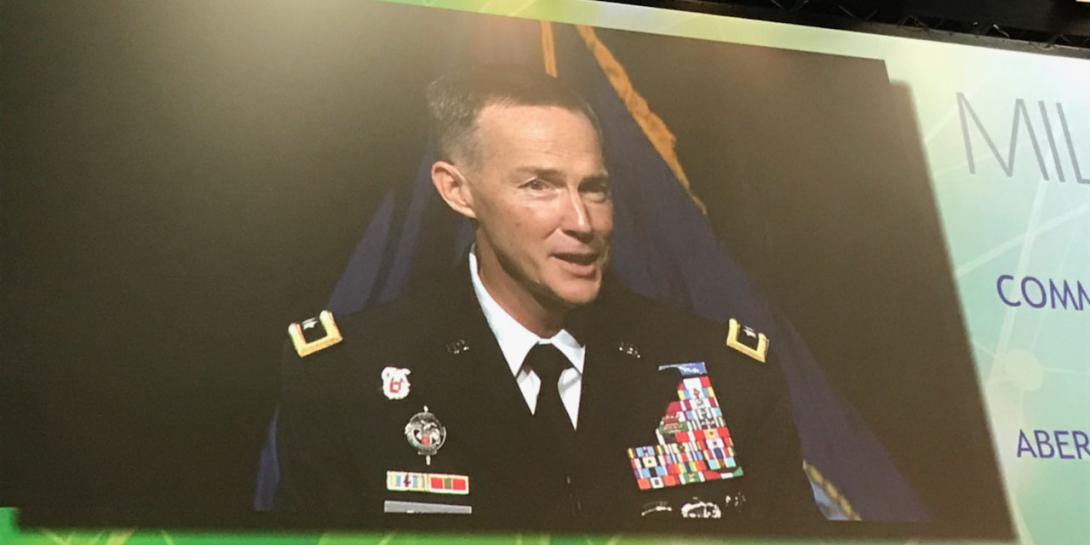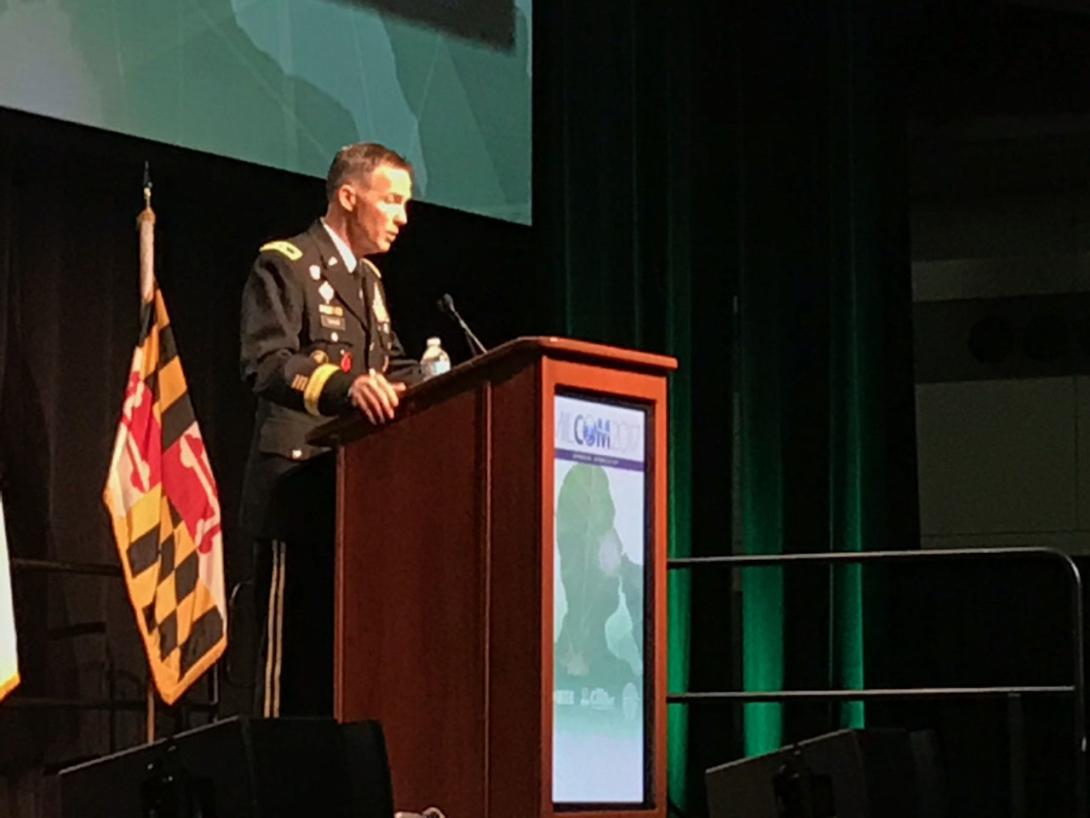Army Readiness Means a Focus on Equipment Sustainment
The Army’s road to readiness runs through Aberdeen Proving Ground (APG) and the U.S. Army Communications-Electronics Command, in the opinion of Maj. Gen. Randy Taylor, CECOM’s commanding general. The advantages of the command—aside from the beautiful 144 miles of shoreline on the Chesapeake Bay in Aberdeen, Maryland, and the 400 American bald eagles that also live there— is that it may be the one place in the military where research and development in science and technology; technology development; testing; acquisition; fielding; and sustainment are all at one installation. The life cycle of command, control, communications, computers, intelligence, surveillance and reconnaissance (C4ISR) is managed at APG, the general explained to the MILCOM lunchtime audience on October 25 in Baltimore.
The general pointed out that while sustainment “isn’t the cool part about the life cycle of anything,” 70 percent of funds go to the sustainment of equipment. The other 30 percent, which gets much more attention, goes for research and development, testing and acquisition. “But it is really that 70 percent where we spend more time and money,” he said. “It makes sense when you think about how long the military sustains its systems. And it is CECOM and APG’s job to make sure that sustainment part goes right.”
Going into the future, the Army needs to think about sustainment in a different way to field a more prepared Army. “We don’t want to perpetrate the legacy status quo,” the general stated. “We need to modernize our capabilities in sustainment.” Actually, the Army is not doing such a good job as far as the modernization piece, Gen. Taylor shared. To improve, however, it is not just the acquisition community that should make improvements. “It should also be the sustainers, or just the sustainers,” he said.
The improvements need to support future Army operations, which will be “much smaller Army teams, operating in a dispersed manner, not seeing each other for a while, and that have to move around every few hours or they die,” he cautioned. “The small teams will have to stay connected, but most likely will be disconnected from each other, in denser, urban environments, probably in megacities, with hundreds of thousands or millions of people also competing for the same electromagnetic spectrum, water, food and roads.” It is these small combat teams—and the communications they need—for which the Army is changing its network.
The general doesn’t fault how the existing network was set up. It was built for a time when the enemy and fighting were different. “We matched the capabilities we needed, with the money we had to spend, for the environment and adversary we were facing at the time,” Gen. Taylor said. “When you look at the communication systems we employed, I happen to think they served us well.” But these technologies won’t make them ready for the next engagement. For example, the past network didn’t include electronic warfare. In fact, it was a conscious decision not to invest in that at the time, as it was not needed. The new threats have informed decisions on what is needed as far as the network and troop readiness.
“It’s no secret that these are trying times,” Gen. Taylor stated. “It’s not hype that we’ve got to be ready. It’s not saber rattling. I think something much greater is looming.” The concern for the military is not to be “too late” in preparation. “If we do it too late that means lost lives,” he warned.
To support the mission of readiness, the Army needs to get to 100 percent supply availability. CECOM must support the material readiness of U.S. Army soldiers, 20 percent of whom are forward deployed warfighters, with 80 percent stationed in the U.S. However, supplies and part obsolescence is a big issue and the government has messed this area up previously, he said. In some cases the service is stuck with missing parts because companies have decided to stop fielding them and the Army does nothing. “It’s insane,” the general said. “We are over a barrel to fix someone else’s problem. We’ll put an end to this.” His team is currently working “to put in place disincentives for bad actors,” including stricter language in future contracts. This will help program managers who develop life-cycle support plans. “Stay tuned for more on this,” the general promised.
Of CECOM’s weapon systems budget, which accounts for 80 percent of its total expenditures, the command spends 47 percent on software, 36 percent on hardware and 15 percent on civilian labor and field team support, with the rest going to engineering support. “This will change,” Gen. Taylor promised, since the service is spending more and more on software. What makes their software expenditures so costly? “It’s software licenses and renewals,” he said, to the tune of $101 million a year on renewing 275,000 software licenses. “And we are going to clean this up,” he noted. CECOM also spends $50 million a year for software patches to fix vulnerabilities, and $17 million on certification and accreditation. “We have to reduce these costs,” Gen. Taylor declared.
The effort to clean up software expenditures will be a multi-year campaign. They started in fiscal year 2018, and plan a “big shift” in fiscal year 2019 to significantly reduce the software sustainment bill, and the saved funds would then go toward hardware investments. In addition, Gen. Taylor wants to have contracts in place at the beginning of a technology’s life cycle – not at sustainment. He wants to leverage off-the-shelf technologies and put in place warranties on technologies. The contracting team is “putting more thought into this” to reduce the Army’s risk.
CECOM is also looking at the divestiture of excess equipment, out-of-date equipment he characterizes as “kind of like an anchor dragging behind a ski boat while water skiing.” Service members will turn in old radios for demilitarizing or destruction. The Army’s Tobyhanna depot in Pennsylvania will assist in this effort.
CECOM’s spending priorities in terms of operational theaters for the next year are, in order of importance: the readiness of the Pacific Command (PACOM); Central Command (CENTCOM); Forces Command (FORSCOM), and within FORSCOM, the main priority is the Global Response Force; and then the European Command.
Lastly, when asked about worries “that keep him up at night,” Gen. Taylor said it was the growing divide with the American public and the military. That growing misunderstanding can bring about unintended consequences, where people think that war is easy or is something that someone else is doing, he said.






Comments